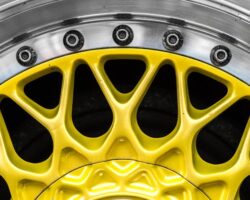The car industry has come a long way since the first cars were invented. Cars today look and work very differently from those early models. This article will explain some big changes and trends in the car world, from the first cars to the future of self-driving vehicles.
The First Cars
The very first cars were simple machines. They moved slowly and often had problems like breaking down. Only a few people could afford them because they were expensive to build. At that time, horses were still the main way to travel. But things changed when factories learned to build cars faster using something called an assembly line. This helped make cars cheaper and more people were able to buy them. Cars started becoming a part of everyday life.
More Style and Power
After cars became more common, people wanted cars that not only worked well but also looked good. Car makers started adding big engines that made cars faster and more powerful. They also added shiny decorations like chrome and bright colors. Roads and highways were built in many places, allowing people to drive long distances easily. Cars became a symbol of freedom and fun, not just a way to get from one place to another.
Saving Fuel and Staying Safe
In the 1970s, fuel prices went up, and people wanted cars that didn’t use so much gas. Car companies started making engines that were better at saving fuel. At the same time, more attention was given to safety. Cars began to come with seat belts, airbags, and stronger frames to protect drivers and passengers in accidents. These changes helped make driving safer and cheaper.
Smart and Connected Cars
In recent years, technology has made cars smarter. Many cars now have computers that control the engine to make it run smoothly and cleanly, reducing pollution. Inside the car, you can find touchscreens that let you use maps, play music, and connect your phone. Some cars also have helpful features like automatic parking, warnings if you leave your lane, and cruise control that adjusts your speed. These smart features make driving easier and safer.
Electric Cars and Clean Energy
A big change today is the rise of electric cars. Instead of using gasoline, these cars run on batteries and electric motors. Electric cars don’t produce smoke or pollution, so they are better for the environment. In the past, electric cars had short driving ranges and took a long time to charge. But now, batteries have improved. Electric cars can drive much farther and can charge faster, making them more useful for everyday driving.
The Future: Self-Driving and Connected Vehicles
Looking ahead, car technology is moving toward self-driving cars. These cars can drive themselves without needing a person to steer or use the pedals. They use cameras, sensors, and computers to understand the road and traffic around them. Self-driving cars could make travel safer and help people who can’t drive. Also, cars will soon be able to connect to traffic lights, other cars, and even your phone to share information. This will help reduce traffic jams and accidents.
In Short
The car industry started with simple machines and has grown into a world of smart, safe, and clean vehicles. Over the years, cars have become faster, more comfortable, and better for the planet. Today, electric and self-driving cars are changing how we think about travel. The future of cars looks exciting and will keep improving the way we move.



